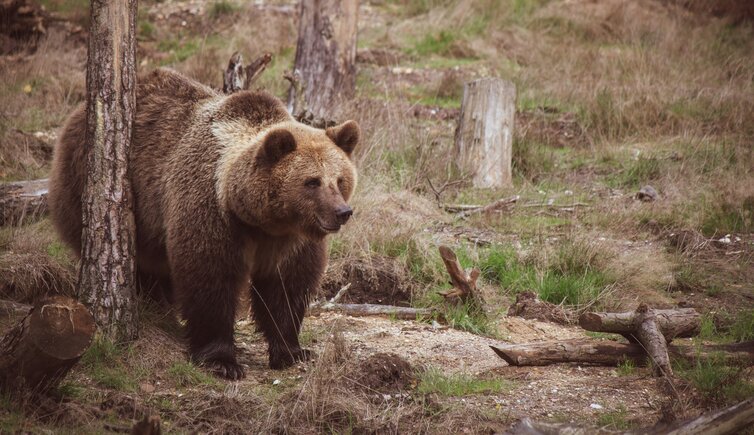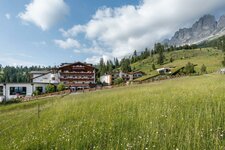Bears are naturally shy of people, but recently there have been some encounters between humans and animals
Brown bears are fascinating, shy animals with fine hearing and a good sense of direction that prefer to avoid humans. Nevertheless, the bear, like smaller, seemingly less dangerous animals, is a wild animal that is and remains unpredictable.
Its history is controversial: The last bear shootings in South Tyrol took place after WWII. Only a few decades later, in 1999, the Life Ursus reintroduction project was launched by the Adamello-Brenta Nature Park and the Autonomous Province of Trento in collaboration with the National Wildlife Institute: At that time, 10 brown bears were brought from Slovenia and released into the wild, some of them were also seen in South Tyrol. The aim of the project is to restore a self-sustaining natural and protected bear population, i.e. of about 50 bears within the next 20 years.
Right behaviour
- Hike in small groups and not alone
- Handle organic waste with care
- Use sounds, but without unnecessary noise, to attract attention, e.g. talk, so that a bear that may be there is not surprised and can retreat
- Bells and bird calls are not suitable: Bells can be associated with farm animals and therefore a danger to the bear
- Keep dogs on a leash, as required by law
Bear sighting
- If the bear is at a great distance (more than 100 m), draw attention to yourself with sounds, but do not approach the wild animal under any circumstances
- If the bear is at a shorter distance, avoid jerky movements
- Do not turn and run, the bear is definitely faster
- Speak calmly to attract attention and move away slowly
- In case of bear cubs, never come closer than 50 m - the mother is around
Fake attack
- A bear stands up to get a better overview, not to attack
- If the bear is taken by surprise, it often launches several fake attacks in which it runs towards the human up to a few metres, stops and retreats again
- If a mock attack occurs, it can help to put something personal, e.g. a jacket or stick (not a backpack!), on the ground and retreat a few metres
- Avoid direct eye contact, but keep the bear in your field of vision
Bear attack
- A bear normally attacks when its escape route is missing, it is provoked or it feels in danger (e.g. also with mother animals), especially if the encounter comes as a surprise to man and animal
- In case of an attack, lie down with the belly on the ground and protect the sensitive parts of the body: hands on the back of the neck, legs closed to protect the abdominal region
- Remain motionless for a few minutes after the bear attack has stopped
- An attack usually lasts a few seconds to a minute, until the bear turns away
- Counter-attack is difficult due to the bear's superiority and makes it more aggressive: The most sensitive part is the nose area
- If an attack lasts more than a minute, the bear wants to prey on you: danger to life
Further information about the topic is provided by the Office for Agriculture and Forestry.
Reports of bear sightings, especially in cases of aggressive behaviour, can be made to the Office for Hunting and Fishing of the Autonomous Province of Bolzano, phone: +39 0471 415170 / 71.

































